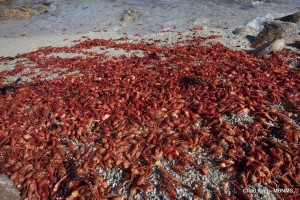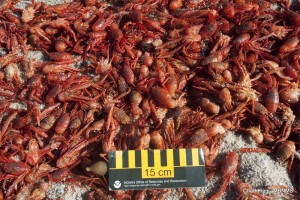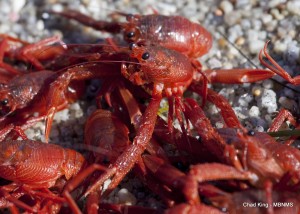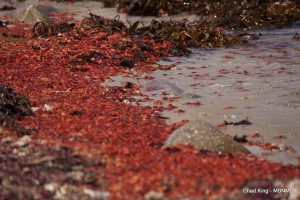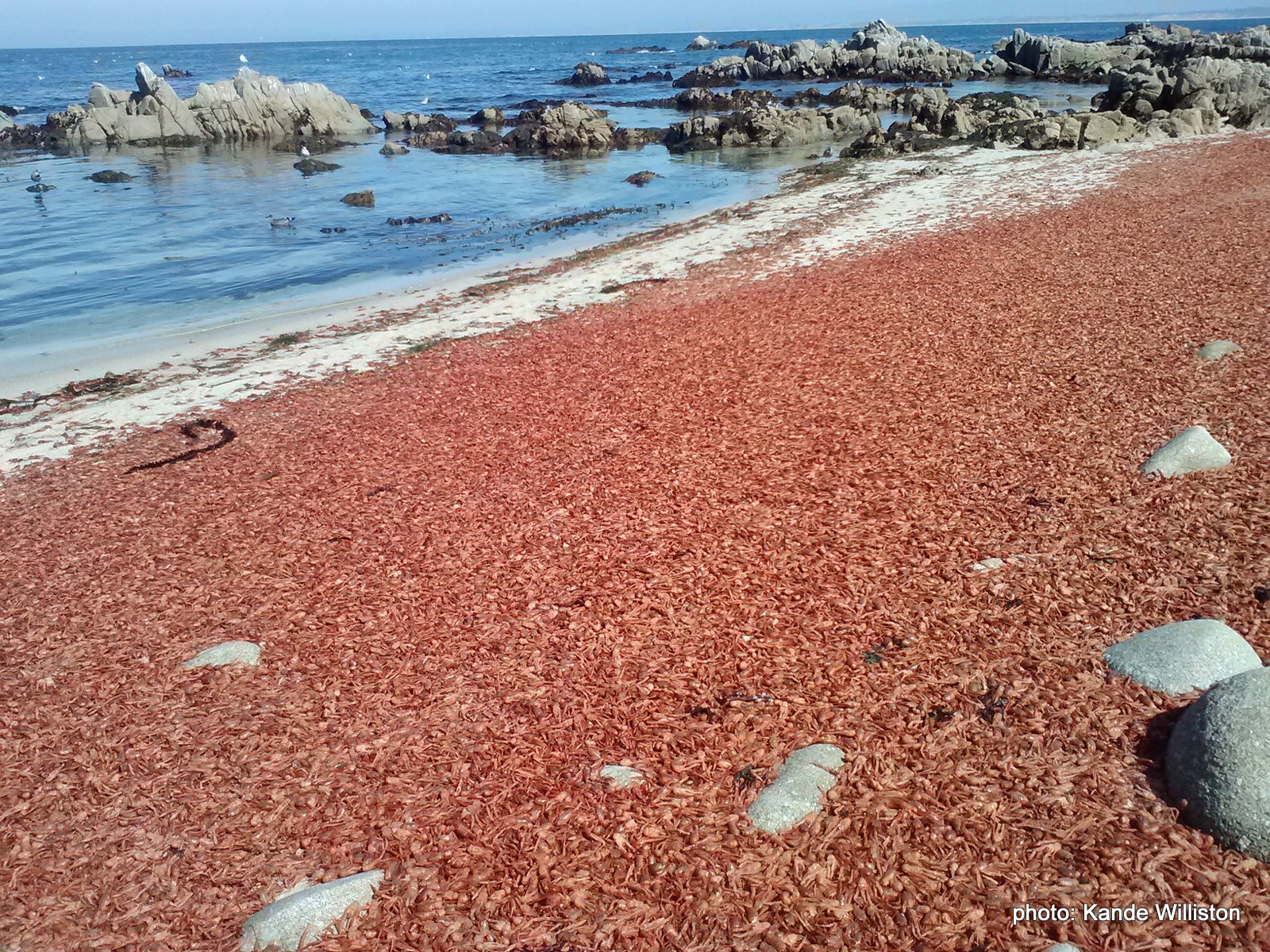
FACTS
- In 1859 pelagic red crabs were first discovered after a large stranding in Monterey Bay.
- Warm currents generated during ENSO events carried pelagic red crabs to Monterey Bay in 1959, 1969, 1982-1983, and 2015-2017.
- Pelagic red crabs normally live off the coast of Baja California, Mexico.
- Pelagic red crabs are an attractive food to species that include migratory fishes, tuna, giant squid, turtles, pinnipeds, seabirds, and whales.
- A 2021 publication indicates the crabs are carried northward during anomalous currents. See article from UCSC here, and the paper itself here.
Most recent sightings:
November 15, 2018 at Lover’s Point, Pacific Grove, CA. See Monterey Herald article and embedded video.
March 8, 2017 at Lover’s Point, Pacific Grove, CA. Monterey Herald Article (3/9/17)
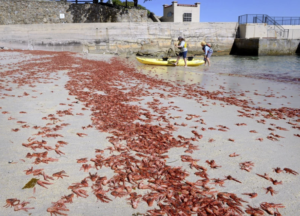
————–
January 6, 2017 at Fisherman’s Shoreline Park, Monterey, CA
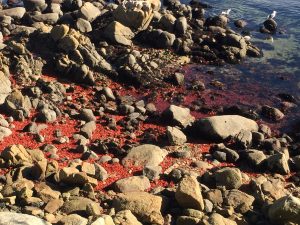
The 2015-16 and 1982-83 El Niño Southern Oscillation (ENSO) events brought huge numbers of pelagic red crabs (Pleuroncodes planipes) northward to Monterey Bay (watch video). The presence of Pleuroncodes, which look like bright-red baby lobsters, is indicative of the intrusion of southern sub-tropical waters into central California, since these crustaceans normally live in the warm waters off the coast of Baja California. During an ENSO event, warmer southern water moves poleward, often bringing marine species not normally found in the cold temperate waters off the coast of California. Several warm temperate and sub-tropical species, including Pleuroncodes, are observed beyond their normal geographic range during ENSO events, and sometimes as far north as Oregon and Washington.
Pleuroncodes stranding events are rare occurrences in Monterey Bay and usually coincide with ENSO events. The species was first discovered in 1859 during a mass-stranding event in Monterey. Further stranding events in Monterey occurred later in 1959 and again in 1969. Dr. Steve Webster, senior marine biologist at the Monterey Bay Aquarium, noted that when present, seagulls were feeding on so many crabs that they could not get airborne. Pleuroncodes are also a source of food for fishes, rays, and pinnipeds (seals and sea lions).
More images of pelagic red crabs from the SIMoN Photo Library
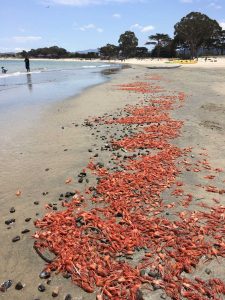
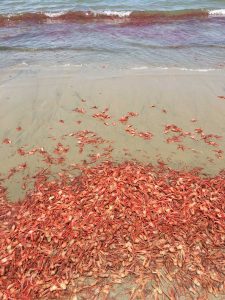
Links to More Information
Red crabs appear in Oregon for first time!
Images and info from Bodega Marine Lab
Images of larvae from Bodega Marine Lab
December 2016 event
Images of the Pelagic Red Crab Online
http://www.bajadestinations.com/fishid/crabpelagicred/crabpelagicred.htm
http://www.earthwindow.com/crabs.html
http://www.divebums.com/FishID/Pages/tuna_crab.html
El Niño Theme Page
http://www.pmel.noaa.gov/tao/elnino/nino-home.html
Pelagic Red Crabs in San Diego
http://www.signonsandiego.com/news/science/20020507-9999_1m7crabs.html
